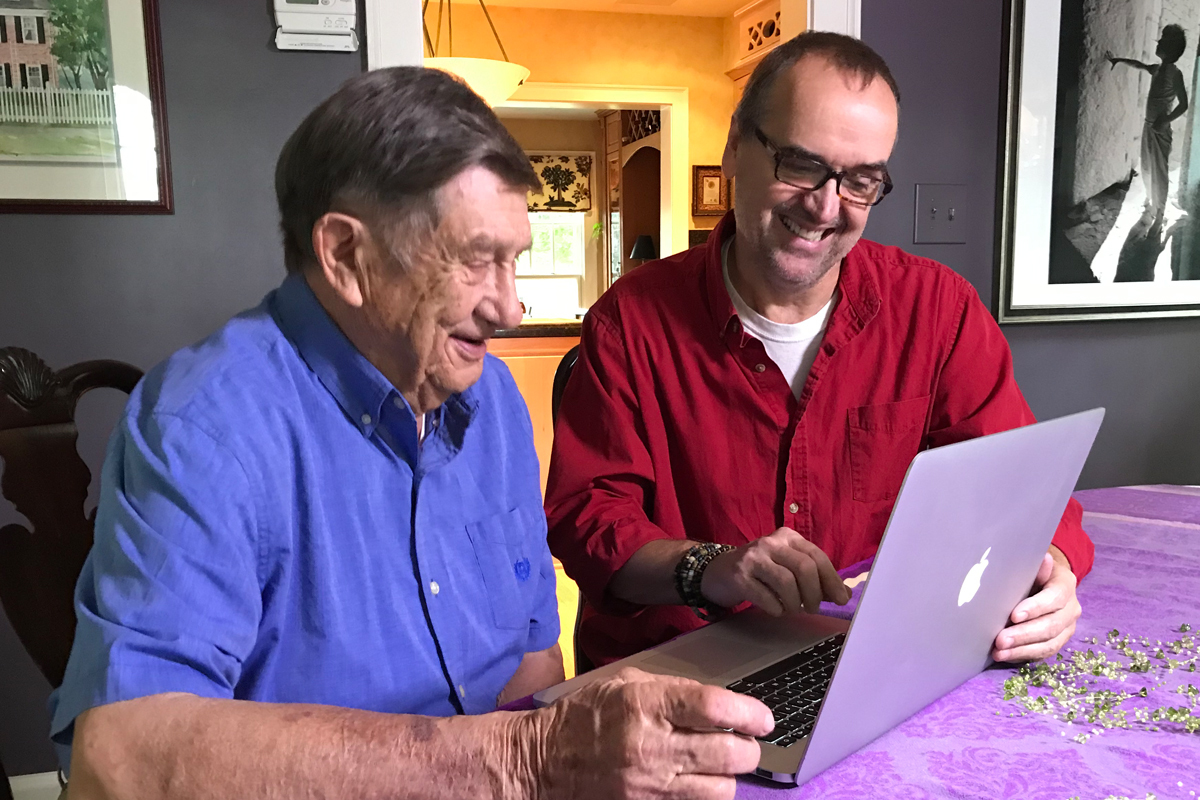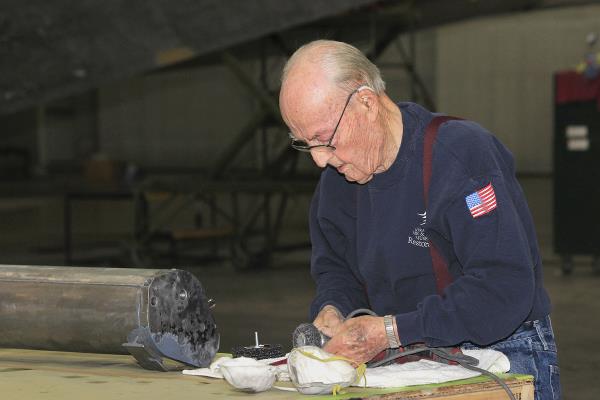As the population ages, the demand for quality in-home senior care continues to rise. Fortunately, technological advancements are transforming the way we care for our elderly loved ones, making it easier, safer, and more efficient. From telehealth services to wearable health monitors and smart home devices, technology is revolutionizing in-home senior care, offering numerous benefits that enhance safety, communication, and health monitoring.
Technological Advancements in Senior Care
One of the most significant advancements in senior care is the rise of telehealth services. Telehealth allows seniors to access healthcare professionals without the need to travel, which can be especially beneficial for those with mobility issues. Virtual doctor visits and remote consultations ensure that seniors receive timely medical attention, reducing the risk of complications from delayed care. This convenience not only saves time but also minimizes the stress and physical strain associated with frequent trips to the doctor.
Telehealth Services:
Telehealth is a broad term encompassing various digital healthcare services provided remotely through telecommunications technology. It includes virtual doctor visits, remote patient monitoring, and teletherapy, among other services. Virtual doctor visits allow seniors to consult with healthcare providers from the comfort of their homes, using video conferencing tools. These consultations can cover routine check-ups, medication management, and follow-up appointments, making healthcare more accessible and less intimidating for seniors. Remote patient monitoring uses devices that collect and transmit health data (such as blood pressure, glucose levels, and weight) to healthcare providers, enabling continuous monitoring and timely interventions. Teletherapy, including mental health counseling and physical therapy, provides essential support for seniors' mental and physical well-being.
Wearable Health Monitors:
Wearable health monitors are compact devices that seniors can wear to continuously track various health metrics. These devices, such as smartwatches and fitness trackers, come equipped with sensors that monitor vital signs like heart rate, blood pressure, and oxygen levels. Some advanced wearables also include fall detection sensors, which can automatically alert caregivers or emergency services if a fall is detected. These devices are designed to be user-friendly, often featuring large, easy-to-read displays and simple interfaces. For instance, a senior wearing a smartwatch can receive reminders to take medication, track their daily physical activity, and get notifications about irregular heart rates. This continuous health monitoring allows for early detection of potential health issues, enabling timely medical interventions that can prevent complications.
Smart Home Devices:
Smart home technology encompasses a range of devices that automate and enhance various aspects of home living. Voice assistants like Amazon Alexa and Google Home can help seniors with daily tasks through voice commands. These devices can set reminders, control smart appliances, and even call for help during emergencies. Smart thermostats automatically adjust home temperatures to maintain comfort, while smart lighting systems can be programmed to turn on and off at specific times or in response to motion. These technologies not only make daily living more convenient but also significantly enhance safety. For example, smart home security systems equipped with cameras, motion detectors, and door/window sensors can alert caregivers to unusual activity, ensuring seniors are safe at home.
Medication Management Apps:
Managing multiple medications can be challenging for seniors, leading to missed doses or medication errors. Medication management apps offer a solution by providing reminders for each dose, tracking medication adherence, and even offering information about potential side effects and drug interactions. These apps can be synced with other devices, such as smart pill dispensers, to automate the dispensing process, ensuring seniors take the right medication at the right time.
Robotic Assistants:
Emerging technologies like robotic assistants are also making their way into in-home senior care. These robots can perform various tasks, from reminding seniors to take their medication to assisting with mobility and daily activities. Some advanced models can even monitor a senior’s vital signs and provide companionship, reducing feelings of loneliness and isolation.
The integration of these technologies in senior care represents a significant step forward, offering enhanced safety, improved communication, and better health monitoring. By leveraging these advancements, caregivers can provide more comprehensive and efficient care, ensuring that seniors maintain their independence and quality of life.
Benefits of Technology in Enhancing Senior Care
The integration of technology in senior care offers several benefits, particularly in terms of safety, communication, and health monitoring.
Safety and Emergency Response:
One of the most significant benefits of technology in senior care is the enhancement of safety and emergency response. Wearable devices equipped with fall detection sensors can automatically alert caregivers or emergency services if a fall is detected. This immediate response can be life-saving, ensuring that help arrives promptly and reducing the risk of serious injury. Additionally, smart home security systems, including cameras and motion sensors, can monitor the home environment and alert caregivers to unusual activity, such as a door being left open or a stove being left on, further enhancing the safety of seniors living alone.
Improved Communication:
Technology has revolutionized the way seniors communicate with their loved ones and caregivers. Video calling platforms, such as Skype, Zoom, and FaceTime, enable seniors to stay connected with family members, reducing feelings of isolation and loneliness. These platforms are especially beneficial for seniors with limited mobility or those living far from their families. Moreover, messaging apps and social media provide additional avenues for seniors to engage with others, participate in online communities, and maintain social interactions, which are crucial for mental and emotional health.
Health Monitoring and Management:
Continuous health monitoring devices collect data on vital signs and physical activity, allowing for proactive healthcare management. Wearable health monitors, such as smartwatches, can track heart rate, blood pressure, and oxygen levels, providing real-time data that can be shared with healthcare providers. This continuous monitoring allows for the early detection of potential health issues, enabling timely medical interventions that can prevent complications. For instance, if a wearable device detects an irregular heartbeat, it can alert both the senior and their healthcare provider, prompting a medical consultation before the condition worsens.
Medication Management:
Managing multiple medications can be challenging for seniors, leading to missed doses or medication errors. Technology provides solutions through medication management apps and smart pill dispensers. These tools can remind seniors to take their medication at the prescribed times, track their adherence, and provide information about potential side effects and drug interactions. Smart pill dispensers can automate the dispensing process, ensuring that seniors take the correct medication in the right dosage, further reducing the risk of medication-related issues.
Enhanced Quality of Life:
Overall, the integration of technology in senior care significantly enhances the quality of life for seniors. By providing tools that improve safety, communication, and health monitoring, technology helps seniors maintain their independence and dignity while receiving the care they need. This independence is critical for seniors' mental and emotional well-being, as it allows them to continue living in their homes and communities, surrounded by familiar environments and loved ones.
Peace of Mind for Caregivers:
The benefits of technology extend beyond seniors to their caregivers as well. Continuous health monitoring, emergency alerts, and real-time communication tools provide caregivers with peace of mind, knowing that they can monitor their loved ones' well-being even from a distance. This reassurance allows caregivers to balance their responsibilities more effectively, reducing stress and improving their overall quality of life.
Cost-Effective Care:
Integrating technology into senior care can also be cost-effective. Telehealth services and remote monitoring can reduce the need for frequent in-person doctor visits and hospitalizations, lowering healthcare costs. Additionally, smart home devices and wearables can help prevent accidents and health issues, potentially reducing the long-term costs associated with medical emergencies and chronic conditions.
Real-World Applications and Success Stories
Real-world applications of these technologies highlight their effectiveness in improving senior care. For instance, a senior living alone with a wearable device that monitors heart rate and detects falls can live independently with confidence, knowing that help is just a button press away. Caregivers have reported that such devices reduce their stress levels, as they can monitor their loved ones remotely and receive alerts if any issues arise.
One caregiver shared how a smart home security system helped her feel at ease while she was at work. The system included cameras and motion sensors that allowed her to check on her mother throughout the day. This peace of mind enabled her to balance her work and caregiving responsibilities more effectively.
Challenges and Considerations
Despite the many benefits, there are challenges and considerations when integrating technology into senior care. Accessibility and affordability are significant concerns, as not all seniors can afford these advanced devices and services. Efforts must be made to make technology more accessible to all seniors, regardless of their financial situation.
Learning and adaptation can also be hurdles for seniors unfamiliar with new technology. Caregivers and family members play a vital role in helping seniors adapt to using these devices. Providing clear instructions, demonstrating usage, and offering ongoing support can make the transition smoother.
Privacy and security are also critical considerations. With the increase in data collection and sharing, ensuring the privacy and security of personal information is paramount. Implementing best practices for data protection and educating seniors about the importance of cybersecurity can help mitigate these risks.
Technology is undeniably transforming the landscape of in-home senior care, offering tools and solutions that enhance safety, communication, and health monitoring. As we continue to embrace these advancements, the quality of life for seniors will undoubtedly improve, allowing them to live more independently and with greater peace of mind.
If you’re looking to integrate advanced technology into the care plan for your elderly loved ones, or if you need professional in-home caregivers who are adept at using these technologies, contact Home Instead of South Bend. Our team is dedicated to providing the highest quality care, ensuring your loved ones receive the support they need in the comfort of their own home. Reach out to us today to learn more about our services and how we can assist you.



